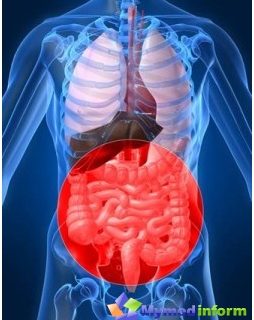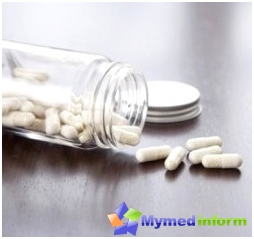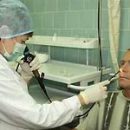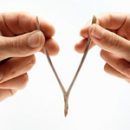Today, silent inflammation in prevalence ranks fourth. It is ahead of only acute respiratory diseases, various intestinal infections and viral hepatitis.
At the age of 20-30 years, the face inflammation arises mainly in male people, whose professional activities are in one way or another associated with frequent microtraumism, as well as with skin pollution. In particular, such professions include movers, drivers, military, builders. In addition, the factor provoking the appearance of the disease is a frequent temperature change. In an older age, women are most often sick. Immediately inflammation most often appears on the legs, hands, rarely on the body and face. It can also appear in the perineum and genitals. Due to the fact that inflammation is well noticed surrounding, it causes certain psychological discomfort in patients.
Causes
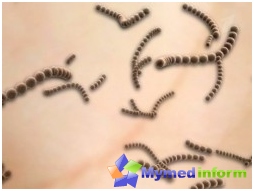
Inflammation is caused by such parasites as beta hemolytic streptococci groups A. And mostly it is Streptococcus Pyogenes, which has a varied set of enzymes, antigens, endo- and exotoxins. This microorganism can be a component of human microflora of human, and may also be present on skin cover of healthy people.
The source of infection is often a person who suffers from one of the species of streptococcal infection. In addition, even a healthy person can become a source of infection.
The infection is usually transmitted by aerosol mechanism by air-droplet. Also infection can be transmitted and contact. In the human body, the infection usually penetrates through the microtraums and through damage to the skin, as well as the mucous membranes of the nose, mouth and genitals. Due to the fact that streptococci is often located on the mucous membranes or can be located on the surface of the skin of healthy people, the danger of infection is extremely large, if a person does not comply with the simplest hygiene rules.
MirSoveto would like to note that the development of infection contributes to an individual predisposition to this kind of disease. Moreover, women are sick more often than men. If a person has chronic tonsillitis, then the risk of infection rises five to six times. The same risk of morbidity is present in patients with other streptococcal infections.
The risk of incidence of rye is also rising when taking drugs from a group of steroid hormones. Most often, the grinding inflammation begins to develop in people who have diseases of the ENT organs, the oral cavity in chronic form, as well as patients Caries. Infection can also develop in the area of scars, which were formed after injuries or after operations. In patients with lymphovenomous insufficiency, lymphedem, edema of various origin, with trophic impaired, in fungal lesions stops, the chest and limbs are most often affected. It should also be noted that some seasonality is characteristic of the disease. So, it was noted that the infection most often occurs somewhere in the period from the second half of the summer before the beginning of autumn.
The infection is capable of entering the body with blood flow into the capillaries of the skin, when the patient has a chronic infection. Also infection is possible with various damage to the skin. When Streptococcus has already fallen into the body, he begins to multiply into the lymphatic capillaries of the dermis, which often leads to the formation of a focus of infection. This turn can cause active inflammation or latent carriage. Due to the reproduction of the pathogen, various products of their livelihood fall into the blood, and this in turn leads to intoxication and fever. In this case, there is a possibility that a toxic-infectious shock is formed.
Symptoms
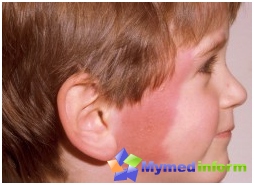
Incubation period of the disease usually takes from several hours to five days. And the disease usually begins acutely and often suddenly. In the first days of the disease, the symptoms of general intoxication are mainly expressed, which manifests itself in the form of headache, Chinkob, nausea, vomiting, total weakness. At the same time usually Body temperature rises to 39-40 degrees. About six to twelve hours after the start of the disease, the patient begins to feel burning and pain that carries inspiration. Redness appears on the skin, and swells appear at the point of inflammation. The difference between the affected skin and a healthy area is noticeable to the naked eye. And not only with its appearance, but also sensitivity. So, the place of the lesion is usually represented as a painful roller on the skin. At the same time, the leather is usually hot to the touch. In the presence of fine blood hemorrhages, we can talk about the erythematosnohemorgic form of the disease.
With a bullous feel, in the presence of severe skin redness, bubbles are formed that contain a light transparent liquid. Later these bubbles can turn into dense brown peels, which are usually twisted from the skin in two or three weeks. At the same time, trophic ulcers and erosion can be formed on the site of such bubbles. In independence from the form of faces, the lymphatic system is defeated.
As for the duration of the disease, the local manifestations of the erythematous form of the faces usually take place after five to eight days. Other forms of the disease can stay even more than two weeks. After passing the grinding inflammation, there may be residual manifestations of the disease, which usually have kind of peeling, pigmentation, peeliness, can remain on the site of inflammatory foci. It should also be noted that there is the probability of the development of lymphostasis, which can lead to elephantity of the limbs.
Treatment
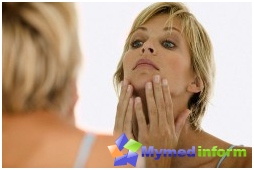
Treatment of grinding inflammation has a dependence on the form of the disease, the multiplicity of the disease, the degree of intoxication, as well as on the availability of complications. Etiotropic therapy is in the reception Antibiotics penicillin row. Also, for treatment, sulfonamide preparations and combined chemotherapy products are used, but these drugs are considered less effective. The course of treatment is usually 8-10 days. If the patient often occurs a repeated manifestation of the disease, then drugs as oxacillin, zesetin, ampicillin and meticillin are prescribed. It is recommended to hold at least two courses with antibiotics. At the same time, drugs need to be changed. There should also be a break between the courses for seven-ten days. In the case of rack infiltration, nonsteroidal anti-inflammatory means are prescribed. In addition, in the treatment of vitamins of group B, ascorbic acid and rutin are prescribed. Good results can give autohemotherapy.
With the exacerbation of the disease, the patient is prescribed local UFO and UHF with the subsequent use of naphthalene or paraffin. Local treatment of uncomplicated roar is usually carried out only with a bullous form of the disease. At the same time, the bull is cut from one edge, and the inflammation is made to apply a bandage with a solution of furaticiline and a rivocolon. Then the patient is made of dressings with the Balsam Shostakovsky or with an exterior. In addition, manganese-vaseline dressings will be useful. Local treatment usually alternates with various physiotherapeutic procedures. Most patients have a favorable forecast.
Prevention
As for the prevention, it is quite difficult for people who are subject to manifestations of such a disease. In particular, it is necessary to carefully treat the concomitant diseases of the skin and diseases of peripheral vessels. In addition, a sanitation of existing foci of chronic streptococcal infection is necessary. It should be noted that immunity cannot be developed. At the same time, all illness marked increased sensitivity.




